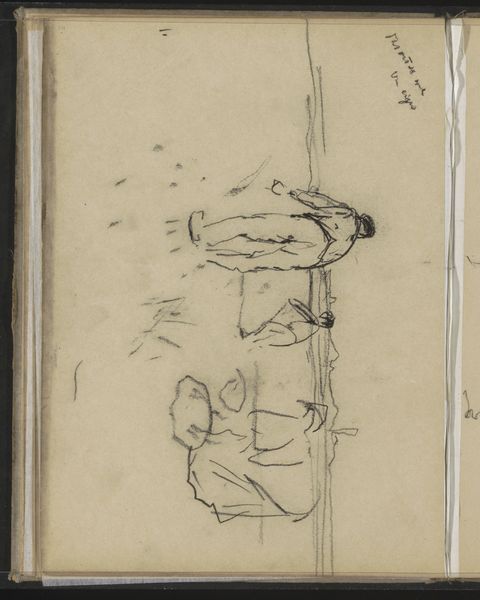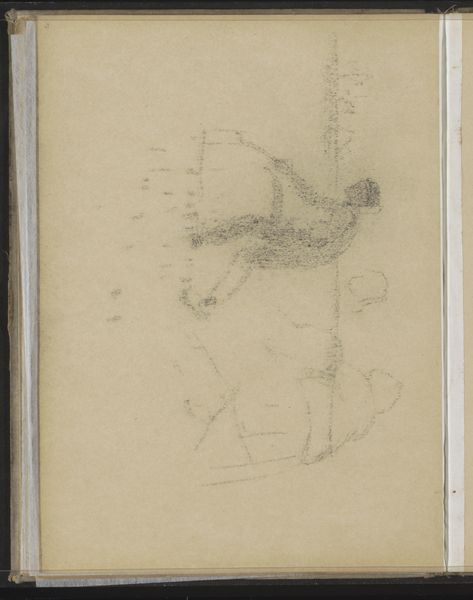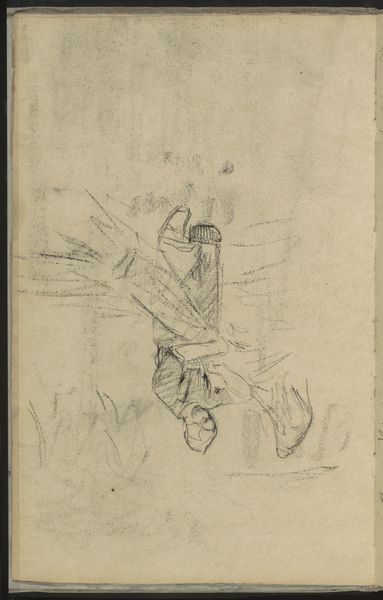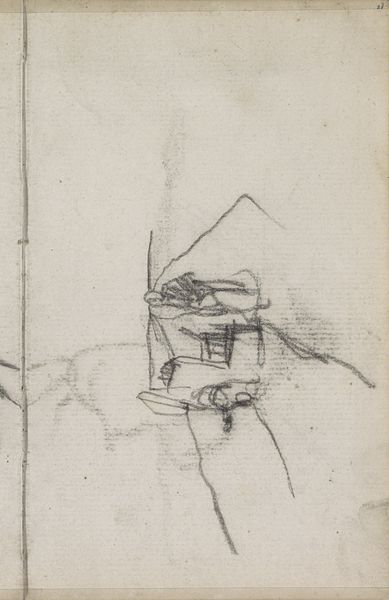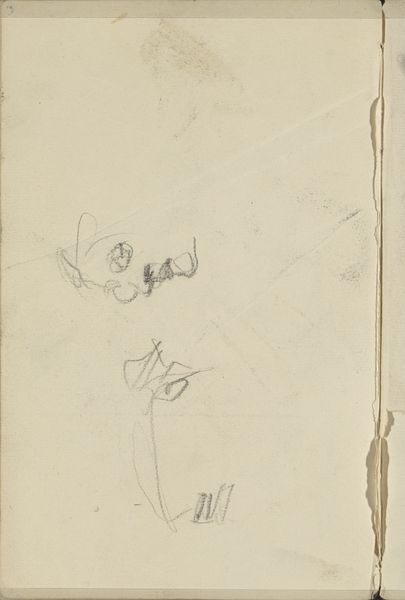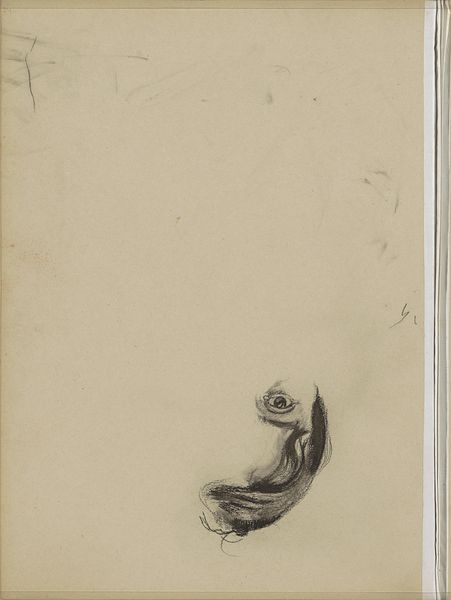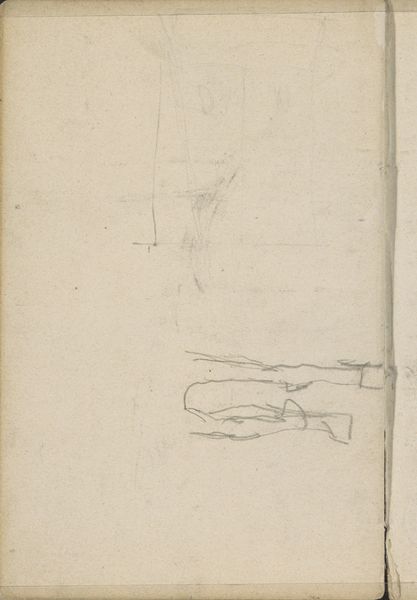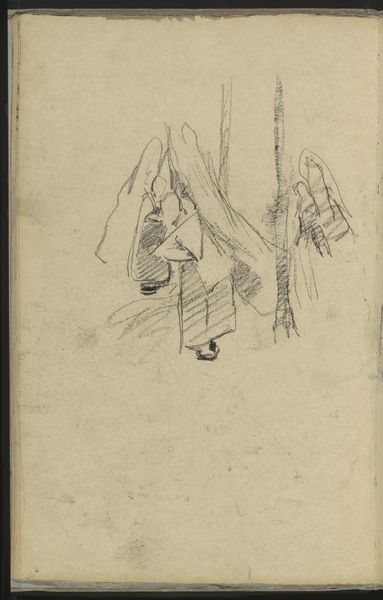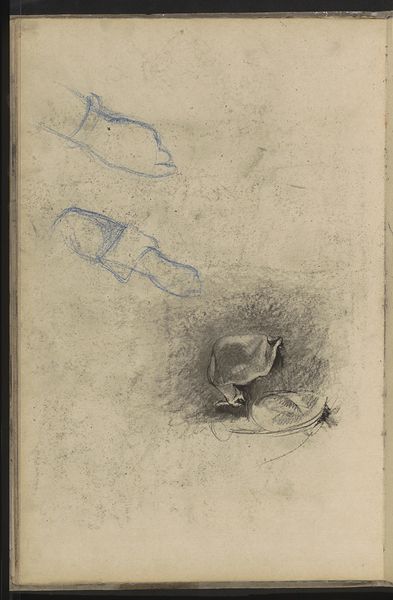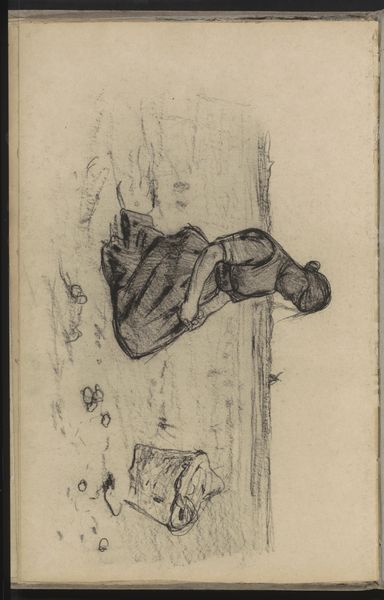
Copyright: Rijks Museum: Open Domain
Curator: This sketch by Willem Witsen, "Vrouw in klederdracht, mogelijk zittend op een akker", or "Woman in traditional dress, possibly sitting in a field", created between 1893 and 1897, gives us such an intimate glimpse into Dutch rural life. Editor: Intimate, certainly. It feels like a stolen moment, rendered hastily with just a pencil on paper. I am most aware of the sparse quality and the immediacy in the lines. Curator: Witsen has captured the essence of this woman, her connection to the land emphasized by the minimal surrounding elements, the implication of a field rather than a detailed landscape. Think about the traditional garments and what those might tell us about community and shared identity in this context. Editor: And how those garments were made. Who spun the wool, wove the fabric, dyed the threads? These clothes are labor, stories of material processes connecting her to a network of makers. You can almost feel the weight of the cloth in the heavier shading around her waist. Curator: Indeed, clothing as cultural memory! It also serves as a signal to the viewer, linking the subject with enduring representations of women as keepers of traditions. The lack of fine detail lends an archetypal feel to the portrait, like a representation of “woman” more than an individual likeness. Editor: Perhaps. Or maybe the simplicity underscores the woman's agency? By stripping away the details, Witsen places the emphasis on the figure's posture, her very grounded presence in the landscape. It's in her posture, the way her form has been simplified, and it allows her form to meld almost naturally within the field, hinting at the long arduous work the garments must endure, rather than being decorative. Curator: A poignant contrast. I had seen an expression of timeless womanhood in her attire. Now, considering its creation and material history as you suggest, I see her attire in relation to her daily environment in this open, shared field. Editor: I am drawn back to how the making practices are central to her, reflecting the values that go unnoticed in our era of automated manufacturing and fashion. It shows just how far removed we are from seeing the human hands which cultivate what we ourselves now put on every single day.
Comments
No comments
Be the first to comment and join the conversation on the ultimate creative platform.
